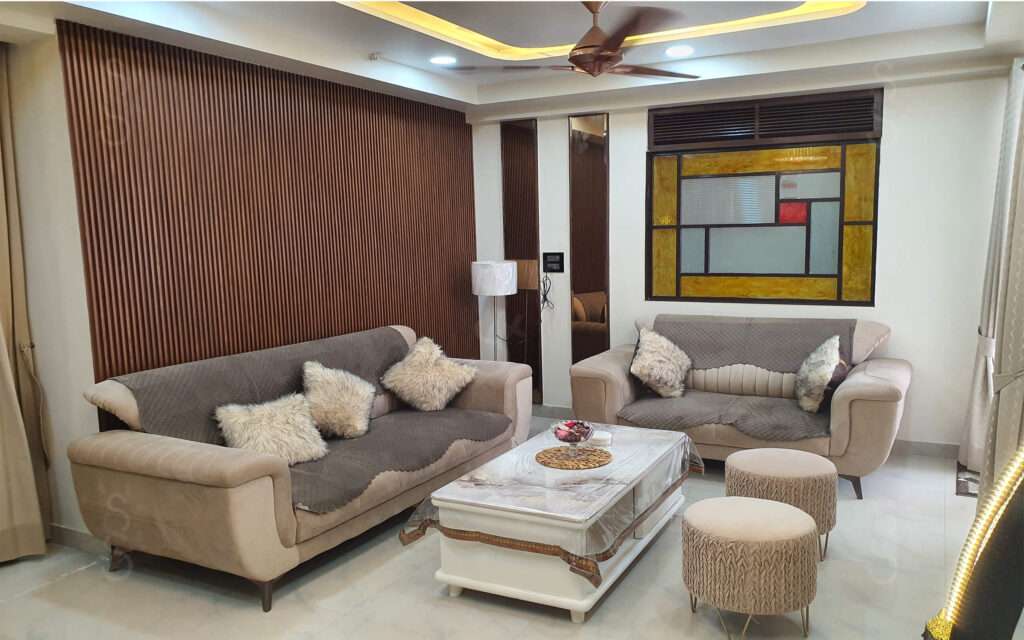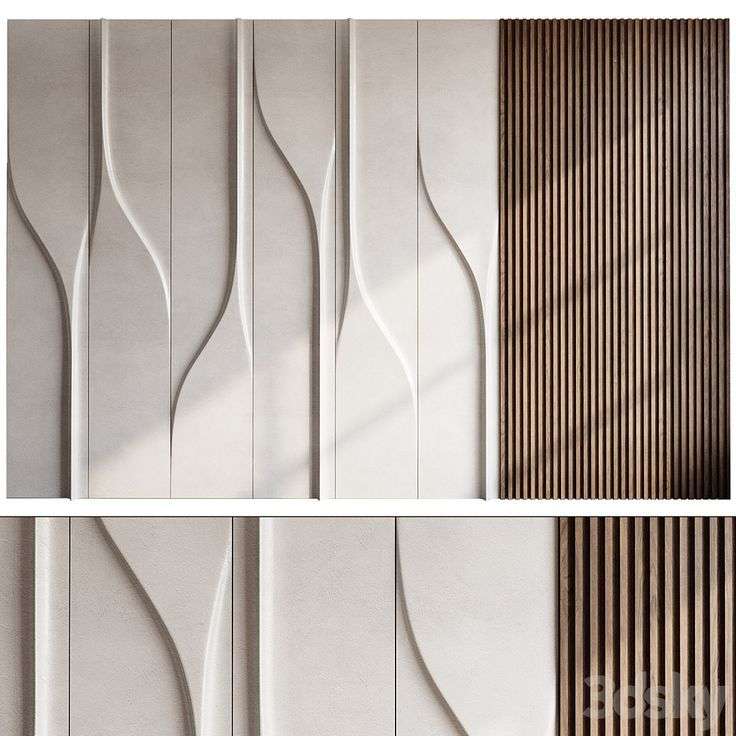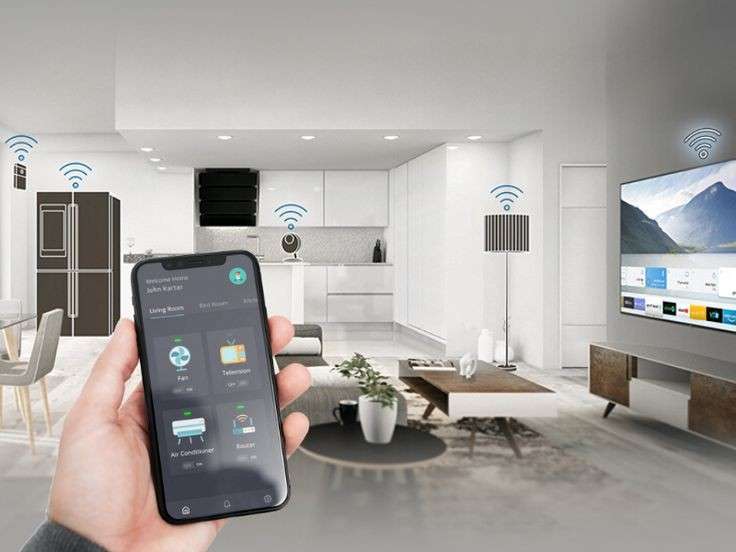At Scale & Structure, we believe that interior design is not just about creating beautiful spaces, but about blending artistry, functionality, and the latest trends to create environments that are both stylish and practical. One of the most interesting and dynamic aspects of interior design is its connection to fashion. Just as fashion evolves season by season, interior design trends shift over time, often mirroring the latest developments in clothing, textiles, and colors. In this blog post, we’ll explore the influence of fashion on interior design, highlighting key trends, and uncovering the parallels between these two creative industries.

1. Color Trends: From Runway to Living Room
Fashion designers often set the tone for the color palette of the season, and interior designers tend to follow suit. For example, Pantone’s Color of the Year is a key influencer for both industries. When bold shades like emerald green or muted pastels take the spotlight on the runway, they’re quickly translated into interior spaces. At Scale & Structure, we’ve seen how colors like rich terracotta, deep blue, and warm mustard can define both clothing collections and interior design schemes. The interplay between these colors can help create cohesive and on-trend designs that feel fresh and modern.
Example:
- Runway: Pantone’s 2025 Color of the Year, “Lush Lavender”
- Interior: Adding accents like lavender throw pillows, wall art, or rugs can bring a trendy, soothing vibe to your living room or bedroom.
2. Texture and Fabric Trends: Soft and Bold Choices
Textures in both fashion and interior design tend to shift together, with designers often looking to fabrics and materials from one industry to inspire the other. In the world of fashion, materials like velvet, silk, and leather dominate during certain seasons, and these textures also make their way into interior spaces. A luxurious velvet sofa or silk curtains can create a sense of opulence and style, while bold materials like faux fur, chunky knits, and suede can add a cozy, inviting atmosphere to a home.
Example:
- Runway: Soft, tactile fabrics like faux fur and silk
- Interior: Velvet cushions, silk bedding, or faux fur throws add sophistication and a touch of luxury to any space.
3. Sustainable Fashion Meets Eco-Conscious Design
Sustainability is an important focus in both the fashion and interior design worlds today. Just as fashion designers are prioritizing eco-friendly materials and ethical production practices, interior designers are embracing sustainability in their choice of materials. Sustainable fabrics, such as organic cotton, bamboo, and hemp, are being used more frequently in upholstery and drapery. Reclaimed wood, recycled glass, and upcycled furniture pieces are also making their way into interior design trends.
At Scale & Structure, we champion the idea of creating beautiful spaces that are both stylish and kind to the planet. By choosing sustainable materials, you not only help the environment but also create a home that reflects your values and personal style.
Example:
- Runway: Eco-friendly fashion lines that use recycled fabrics and sustainable materials
- Interior: Sustainable materials like reclaimed wood furniture or organic cotton upholstery can help create a stylish, eco-conscious home.
4. Bold Prints and Patterns: From Clothing to Interiors
Fashion designers are known for experimenting with bold prints, and this trend often spills over into interior design. Animal prints, geometric patterns, and florals that dominate the catwalks are often translated into home décor. Whether it’s a zebra-print chair or a floral-patterned wallpaper, these bold designs create striking focal points in any space. At Scale & Structure, we love using statement prints in moderation, adding a dynamic element to an otherwise neutral room.
Example:
- Runway: Bold, eye-catching prints like floral patterns, animal prints, and geometric designs
- Interior: Incorporating a statement patterned rug, a bold accent wall, or decorative throw pillows can add excitement and personality to your space.
5. Minimalism and Simplicity: Less Is More
In recent years, both the fashion industry and the world of interior design have seen a shift toward minimalist design philosophies. Clean lines, neutral tones, and an emphasis on simplicity are characteristics of both trends. For fashion, this often means minimalist silhouettes, neutral color palettes, and understated accessories. In interior design, minimalism is seen in uncluttered spaces, simple furniture pieces, and a focus on functionality.
Example:
- Runway: Neutral-colored outfits with sleek, simple silhouettes
- Interior: A minimalist approach with white walls, functional furniture, and a focus on space and light allows for a serene and stylish home environment.
6. Vintage Revival: Nostalgia in Fashion and Interiors
Nostalgia plays a huge role in both the fashion and interior design worlds. The influence of past decades often resurfaces in both industries, with elements from the ’60s, ’70s, and ’80s making their way back into modern collections and design concepts. In fashion, we see retro-inspired clothing, while in interiors, vintage furniture and retro color schemes are making a comeback. At Scale & Structure, we love the timeless appeal of mid-century modern furniture or the quirky charm of 80s-inspired décor.
Example:
- Runway: Vintage-inspired outfits, such as bell-bottom jeans or neon 80s jackets
- Interior: Vintage furniture pieces or bold, retro wallpaper patterns add character and a sense of history to your space.
7. Personalization and Individuality: Tailored to You
Fashion allows individuals to express their unique personalities, and the same goes for interior design. Customization and personalization are key trends in both industries. Whether it’s a tailor-made suit or a bespoke sofa, the ability to create something that reflects your personal style is highly coveted. In the world of interior design, we encourage our clients to incorporate personal elements, whether through custom-built furniture or unique art pieces, to make their space truly their own.
Example:
- Runway: Custom-made fashion pieces or outfits that reflect personal style
- Interior: Personalized design elements like a custom-built dining table or a wall adorned with meaningful artwork.
Conclusion
The worlds of fashion and interior design are intrinsically linked, constantly influencing each other and evolving in tandem. Trends in one industry often serve as inspiration for the other, creating a dynamic flow of ideas and styles. At Scale & Structure, we understand that the spaces we create should not only reflect current trends but also the unique personalities and lifestyles of those who live in them. By embracing the parallels between fashion and interior design, we can curate environments that are both stylish and timeless.
If you’re looking to transform your space into something truly special, connect with us at Scale & Structure. Our expert team can help bring your vision to life by blending the best of fashion and interior design trends, creating a home that’s as fashionable as it is functional.



